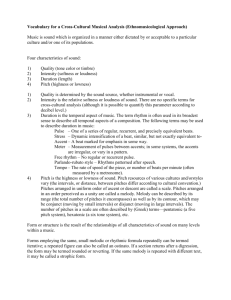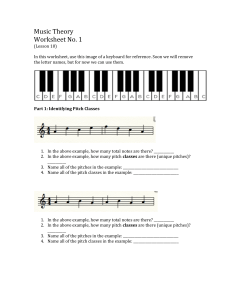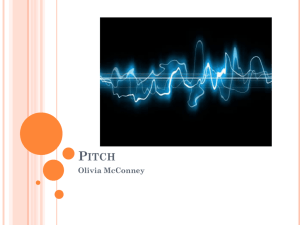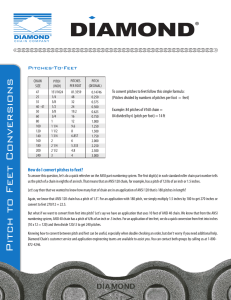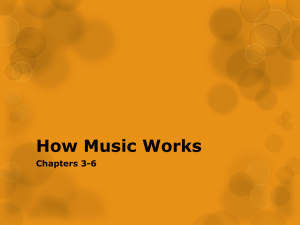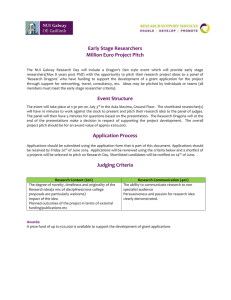Music Theory IV Trythall NYU Theory IV vocabulary
advertisement
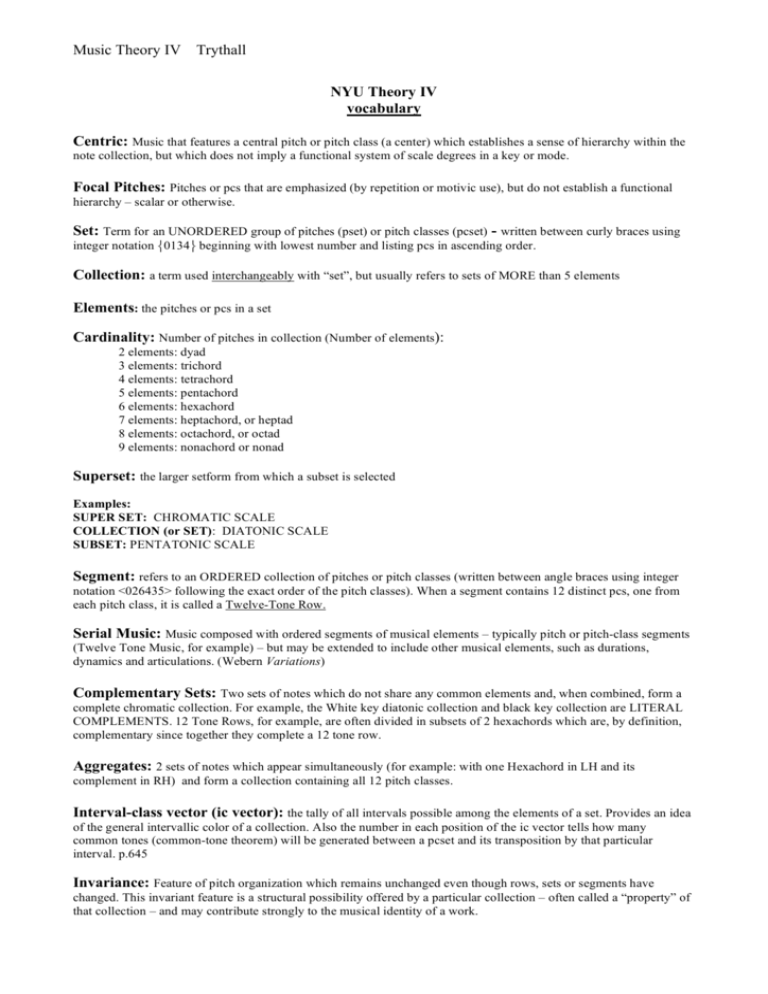
Music Theory IV Trythall NYU Theory IV vocabulary Centric: Music that features a central pitch or pitch class (a center) which establishes a sense of hierarchy within the note collection, but which does not imply a functional system of scale degrees in a key or mode. Focal Pitches: Pitches or pcs that are emphasized (by repetition or motivic use), but do not establish a functional hierarchy – scalar or otherwise. Set: Term for an UNORDERED group of pitches (pset) or pitch classes (pcset) - written between curly braces using integer notation 0134 beginning with lowest number and listing pcs in ascending order. Collection: a term used interchangeably with “set”, but usually refers to sets of MORE than 5 elements Elements: the pitches or pcs in a set Cardinality: Number of pitches in collection (Number of elements): 2 elements: dyad 3 elements: trichord 4 elements: tetrachord 5 elements: pentachord 6 elements: hexachord 7 elements: heptachord, or heptad 8 elements: octachord, or octad 9 elements: nonachord or nonad Superset: the larger setform from which a subset is selected Examples: SUPER SET: CHROMATIC SCALE COLLECTION (or SET): DIATONIC SCALE SUBSET: PENTATONIC SCALE Segment: refers to an ORDERED collection of pitches or pitch classes (written between angle braces using integer notation <026435> following the exact order of the pitch classes). When a segment contains 12 distinct pcs, one from each pitch class, it is called a Twelve-Tone Row. Serial Music: Music composed with ordered segments of musical elements – typically pitch or pitch-class segments (Twelve Tone Music, for example) – but may be extended to include other musical elements, such as durations, dynamics and articulations. (Webern Variations) Complementary Sets: Two sets of notes which do not share any common elements and, when combined, form a complete chromatic collection. For example, the White key diatonic collection and black key collection are LITERAL COMPLEMENTS. 12 Tone Rows, for example, are often divided in subsets of 2 hexachords which are, by definition, complementary since together they complete a 12 tone row. Aggregates: 2 sets of notes which appear simultaneously (for example: with one Hexachord in LH and its complement in RH) and form a collection containing all 12 pitch classes. Interval-class vector (ic vector): the tally of all intervals possible among the elements of a set. Provides an idea of the general intervallic color of a collection. Also the number in each position of the ic vector tells how many common tones (common-tone theorem) will be generated between a pcset and its transposition by that particular interval. p.645 Invariance: Feature of pitch organization which remains unchanged even though rows, sets or segments have changed. This invariant feature is a structural possibility offered by a particular collection – often called a “property” of that collection – and may contribute strongly to the musical identity of a work.

